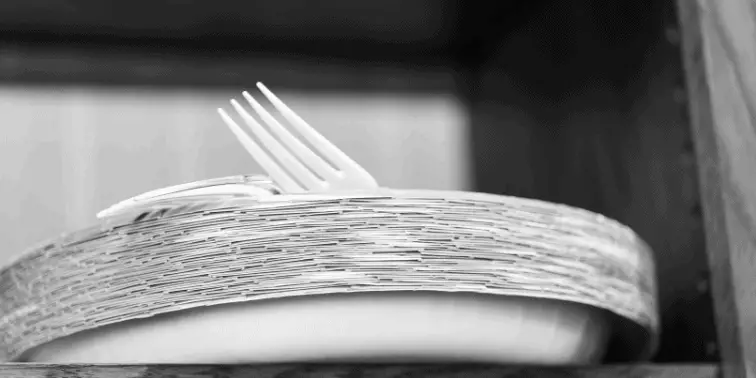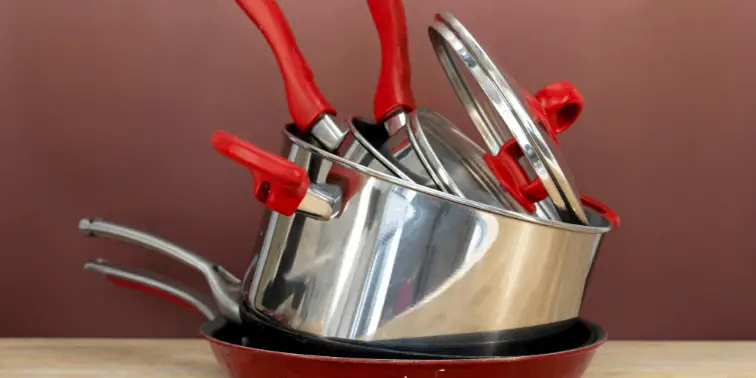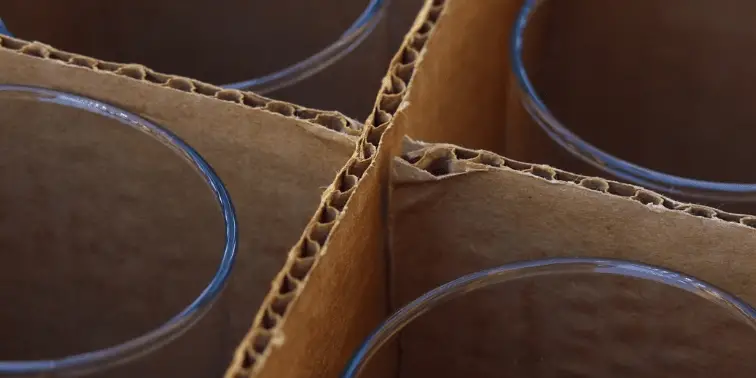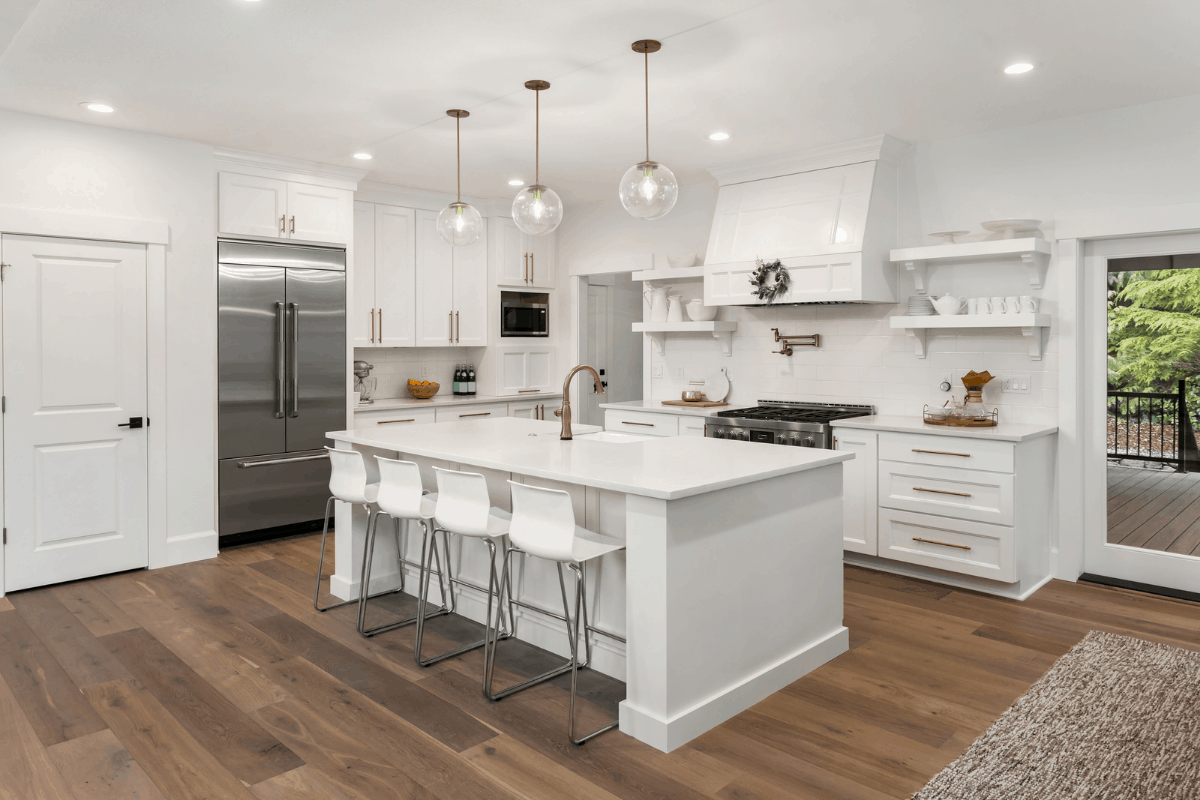The kitchen can be a terrifying part of the house to move. The level of organization and detail required is extensive. Many of the items are sharp or breakable.
As with all rooms in your home, a plan can help streamline the process. If you start early enough, you do not have to pack the entire kitchen today. You can focus on wrapping the coffee mugs or packing away silverware, one section at a time.
Below is a reference guide to help you pack your kitchen for moving. Read further to learn some tips and tricks to get this done, done quickly and done right.
Table of Contents
Materials You Need
Packing up a kitchen can take many boxes. Additionally, the numerous fragile items need protective wrapping. The wrapping can be packing paper, bubble wrap, or other soft cloth material. You can even use old towels, t-shirts, or small blankets.
In fact, the kitchen is typically the room in your house that contains the most breakable items. Don’t skimp on materials or you may end up really regretting when it comes time to unpack your kitchen.
Here is the main list of helpful tools:
- Moving Boxes
- Packing Paper, Bubble Wrap, and any old hand towels or t-shirts
- Packing Tape
- Permanent Marker
If you have a set of dishes that you really love, you may even want to consider getting a storage set that’s designed specifically for storing and moving dishes, cups and mugs.
that’s designed specifically for storing and moving dishes, cups and mugs.
Make a Plan
Begin with a plan. It will make everything easier. Walk through your kitchen or visualize it—open drawers and cupboards. Take note of the silverware, the pots and pans and the perishable food.
What do you want to tackle first?
See this opportunity for what it is: the chance to declutter your kitchen. Are there appliances you never use? Bowls that take up space? There is probably someone within your friend group who can benefit from a blender or more Tupperware. An alternative is donating them or selling them.
or selling them.
Plan out your meals. Be sure to leave cleaning supplies and some forks, knives, spoons, trash bags, and plates for yourself to use when all the other items are packed, including food.

Or, what we like to do is get a supply of paper plates and silverware to get us through the last week or so. They’ll come in handy not only the last few days of your move when you have everything packed, but when you move in as well when you may not feel like digging through boxes to find a plate and a fork.
Finally, if you can afford take-out for every meal until you move, by all means, go for it! Otherwise, set aside some food and kitchen supplies for the meantime.
Remove Perishable or Expiring Food
Put the nonperishable food in boxes, old grocery bags, or tote bags.
Remember to keep enough food for you and your family to eat while you are moving.
How much of your food do you want to take to the new place? If it is perishable, you will most likely want to throw it away or eat it before moving. No need to add unnecessary things to your packing list.
If the food does not need to be refrigerated, check the expiration date to make sure you should include it.
For nonperishable food, be judicious about whether you will truly use it. Canned goods, bags of flour and rice can be heavy. Lighten the load by donating them if need be.
If the nonperishable food comes along for the ride, pack the food into boxes or utilize old grocery bags (plastic or a more permanent material).
Packing Pots and Pans
This activity can be a little noisy. Remove your pots and pans from wherever they are stored. Find the biggest pot and pan. The goal is to stack the pots and pans inside each other, if they fit, to save as much space as possible. Take a sheet of packing paper and place it in between each stacked pot and pan.

Do not overstuff the box to keep it from being too heavy.
For the lids, wrap them individually with packing paper or bubble wrap, if they are glass or porcelain. Put the fragile lids in their box with extra padding.
Dishes, Bowls, and Plates
Stowing away your plates and bowls can be one of the more straightforward parts of packing the kitchen.
Plates and Dishes
Let’s discuss how to pack dishes and plates.
First, grab a moving box (medium size) and add bubble wrap, packing paper, or cloth material to the bottom.
For the second step, the keyword is “barrier.” Soft padding needs to be in place between each dish. If you are nervous about preserving your plates and dishes, you can wrap them individually.
Otherwise, lay out a dish and then place some packing paper, bubble wrap, or padding on top of it. Then stack another plate on top of the padding, and repeat the process until you have a stack of four.
Place them in the box. Do not let the container get too heavy by stacking too many. Continue this until all of your plates and dishes are wrapped and stored away.
Bowls
Repeat the same packing method for the bowls. Sort them by type and try to have them fit into each other.
Wrap each one individually or place a layer of packing paper in between them. Stack them until you have three or four bowls on top of each other and put them into the box.
Glassware
From coffee mugs to wine glasses, the shape of the glassware is much more obtuse than dishes and will need safe handling.

There are special boxes you can purchase with dividers inside them, made just for glassware. This will simplify the process and reduce the possibility of breakage. They might be more expensive, but it might be worth it, knowing you have a particular slot for each one of your wine glasses.
For regular boxes, wrap your glassware in bubble wrap or packing paper more than once to add protection. Place them carefully in the boxes. Additionally, use old hand towels or cloth items to wrap them for extra protection.
Place them upright in the box lined with packing paper or a towel. You can add more padding to the top of the box once you are finished.
Silverware
Organize your silverware by different types, such as forks, knives, and spoons. Grab a bundle of spoons and wrap them in packing paper, bubble wrap, or a hand towel. Secure the wrapping with tape for extra security, then place it in the box. Continue this process with the rest of your silverware until complete.
Knives
When moving, some items should be separate from others and have their own space because they are fragile. Other things are kept apart because they can cause damage. Knives are in this category.
Keep the knives separate in their designated boxes.
Extra padding is in order. Wrap several knives in an old towel or other cloth material. Fold the towel in a way that each blade has a barrier from the other knives. Tape up the ends so they do not slip out and stay secure. Lay the knives flat in the box, all facing one direction.
If you have a cutlery block, leave the knives in the block and wrap it in packing paper. Place it in a box with padding at the bottom.
Appliances
Appliances can have infinite little nooks and crannies that can hold old bits of food, dust, or grime. Leave behind the dust and aged melted cheese by cleaning your appliances. Take the time to clean and disinfect any devices like the microwave, coffee machine, hot plate, blender, toaster oven, and anything else you are packing.
If the appliance has glass or breakable parts, such as a blender, disassemble the components and wrap them separately. If you are not worried and do not wish to follow those steps, cover the entire appliance in bubble wrap or a towel and place it in a box.
Keep Up the Good Work!
Moving the items in your kitchen from one place to another can seem like an insurmountable task. Understandably so, due to the number of parts and the details. Segment the sections of the kitchen and focus on one at a time, as your schedule allows.
Even if packing your kitchen turns out to be a mess, keep breathing and know that eventually you will be eating off of your unpacked dishes in your new home.


